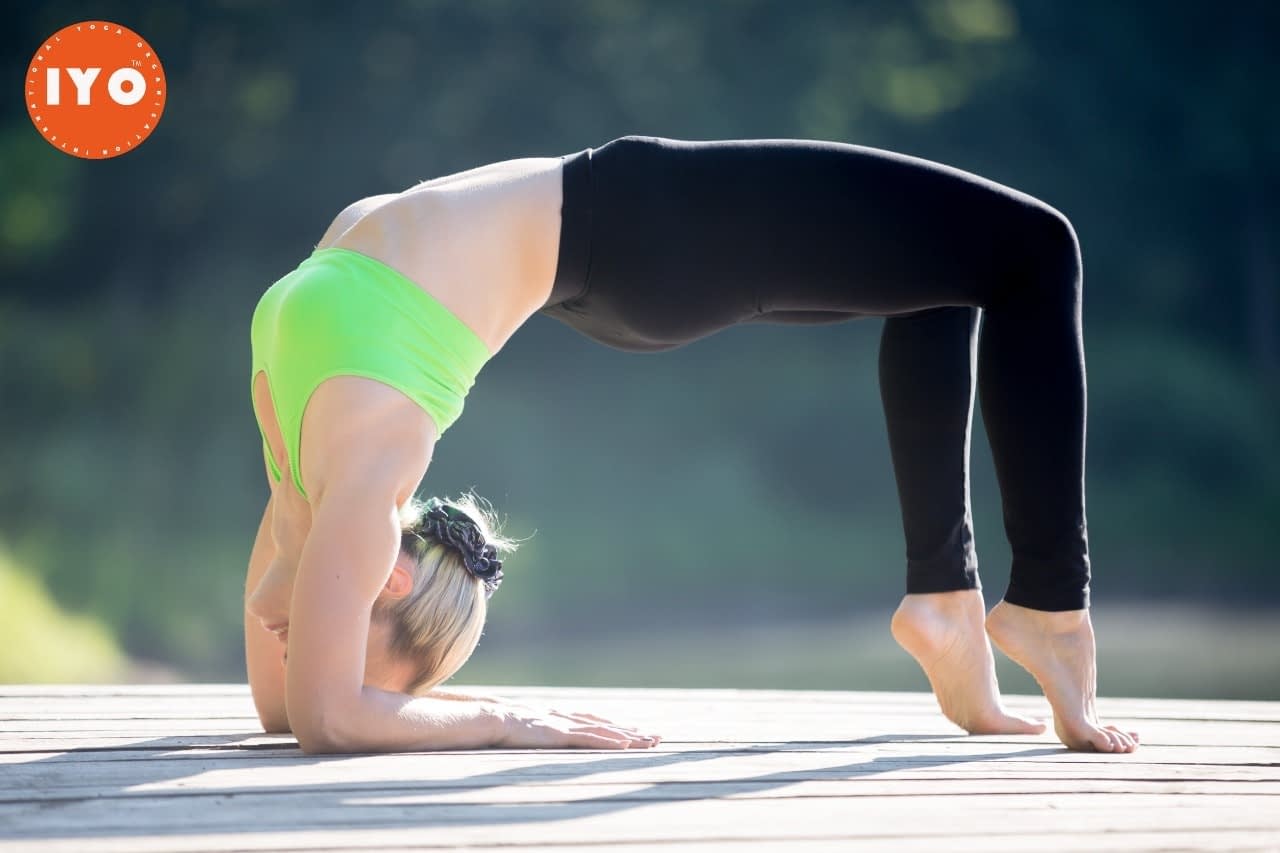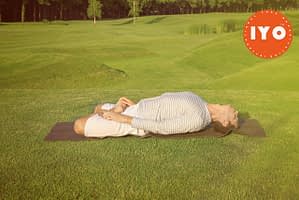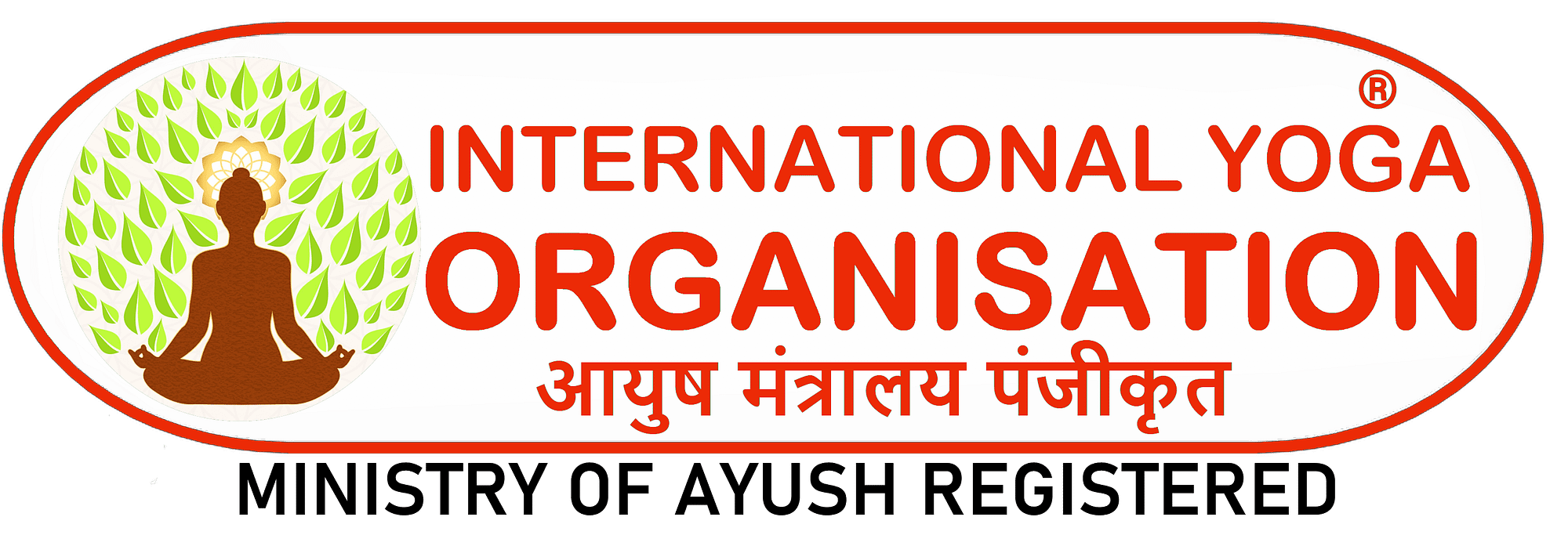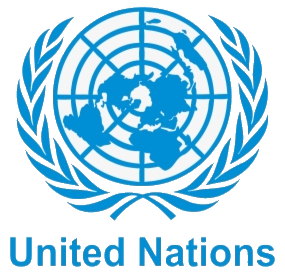
The IYO® health benefits of backbends

Whether or not you are naturally flexible, bending poses are extremely beneficial for improving your spine and toning your internal organs. The movement into and the holding of backbends releases your chakras, or the energy centers in your body, so energy and joy can flow through you unimpeded. (See Chapter 20, “Chakras, Mudras, Mantras, and Mandalas.”) After a few good backbends, you may just laugh out loud. Start by performing a simple stretch to open your neck, shoulders, and chest.
Bhujangasana: Cobra Pose
Bhujanga means “serpent,” and the cobra is a sacred and revered serpent in India. But what is a serpent? Basically, one big spine! In the cobra pose, bhujangasana (pronounced BOO-jhan-GAH-sah-nah), concentrate on allowing the strength of your spine to move you. The cobra pose helps to align your spinal disks, open up your heart chakra, and strengthen your back. It also strengthens your nervous system and your eyes. When practicing the cobra pose, keep your elbows in toward the body. As your shoulders rise off the floor, don’t scrunch them up around your neck. Keep your eyes open and peering up to tone your peripheral vision.
Dhanurasana: Bow Pose
Dhanurasana (pronounced DAH-noo-RAH-sah-nah), , the bow pose, is a highenergy pose. Imagine your body is like an archer’s bow ready to launch an arrow. This pose keeps your spine supple, tones your abdomen, massages your back muscles, strengthens your concentration, and decreases laziness. When in the bow pose, be sure to grab your ankles, not your toes or feet. If you can’t grab your ankles, simply bring your hands back as far as you can alongside your body. Move your hands toward your ankles, not your ankles toward your hands. Keep your elbows straight, not bent, and don’t lift your shoulders up to your ears—keep them pressed down.
Urdhvamukha Shvanasana: Upward Facing Dog
Urdhva means “upward,” and mukha means “mouth” or “face.” Shvan means “dog.” Urdhvamukha Shvanasana (pronounced OORD-vah-MOOK-hah shvah-NAH-sahn-ah) looks like a dog stretching upward. (Yoga shows great respect for dog poses—after all, what is “dog” spelled backward?) Upward facing dog is great for a stiff back. It strengthens the spine, alleviates backaches, increases respiration and circulation (especially to the pelvic area), and strengthens the eyes.
Matsyasana: Go Fish
A fish must open its gills to breathe; matsyasana (pronounced mahtz-YAH-sah-nah) fills the lungs with air, improving the yogi’s ability to float in water (try it!). The fish pose energizes the calciumregulating parathyroid gland (located in your neck), strengthens the abdomen, improves the voice by opening the Mercury chakra located in the throat and relieves mental tension.
Half Fish Pose
The half fish pose is a simpler version of the full fish pose that follows. Start with this pose and work your way up to the full fish! In the half fish pose, don’t let your feet fall to the side. Keep your knees straight. Make sure the top of your head, not the back of your head, rests on the floor. Keep your elbows in, breathe regularly, and don’t put your weight on your head. Let your elbows and arms support your weight.
Full Fish Pose This pose is the same as the half fish pose, except your legs and feet are in the full lotus position and your hands hold your feet. If you cannot do the full lotus, simply cross your legs. Your hands do not need to hold your feet if you aren’t in full lotus position. This variation further opens the pelvis and promotes energy flow through all your chakras.
Ustrasana: Camel
Ustra means “camel,” and ustrasana (pronounced oohs-TRAH-sah-nah) imitates the hump of a camel. Your shoulders and chest become more open and mobile through the camel pose. Your abdomen is stretched, digestion is improved, rib muscles are strengthened, and the pose can also help sciatica (a painful condition felt in the hip or thigh, resulting from inflammation of the sciatic nerve—a long nerve that starts in the hip and runs down the back of the leg). When practicing the camel pose, pretend there is a wall in front of you and you are pressing your thighs toward it. Bend only as far backward as you can while keeping your neck properly supported by your neck muscles.
Cakrasana: Doin’ Wheelies!
Cakrasana (pronounced chah-KRAH-sah-nah) makes your body strong and mobile, like a wheel. It stretches and strengthens the stomach, improves the concentration by bringing blood to the head, and gives greater control over the body. It also prevents bad posture, tones the extremities, improves the memory, heightens energy and vitality, brings a feeling of lightness to the body, and improves circulation to the trachea and larynx. (The trachea—also known as the windpipe—is the passageway between the larynx and the lungs, and the larynx is the area of the throat that contains the vocal cords.) In the wheel pose, your hips may feel too tight to lengthen sufficiently. If your shoulders are tight or your arms are weak, you may be unable to push yourself up into position. Just keep working at it. There it is. The wheel pose is the most dynamic of backbends. It’s the one that effectively stimulates all of the chakras (or cakras). Hence the name of the pose: cakrasana.
Backbends can help you laugh more … and better! Don’t we all need more and better laughs?
➤ Backbending poses are important for increasing flexibility, as well as keeping various internal organs open and free.
➤ Open, toned organs result in open chakras and a free flow of energy throughout the body.
➤ Backbends are great for people who work at desks or computers all day; they correct that hunched-over posture.
➤ Backbends make it easier to breathe deeply and fully; they stimulate the body and get more oxygen to the brain.


